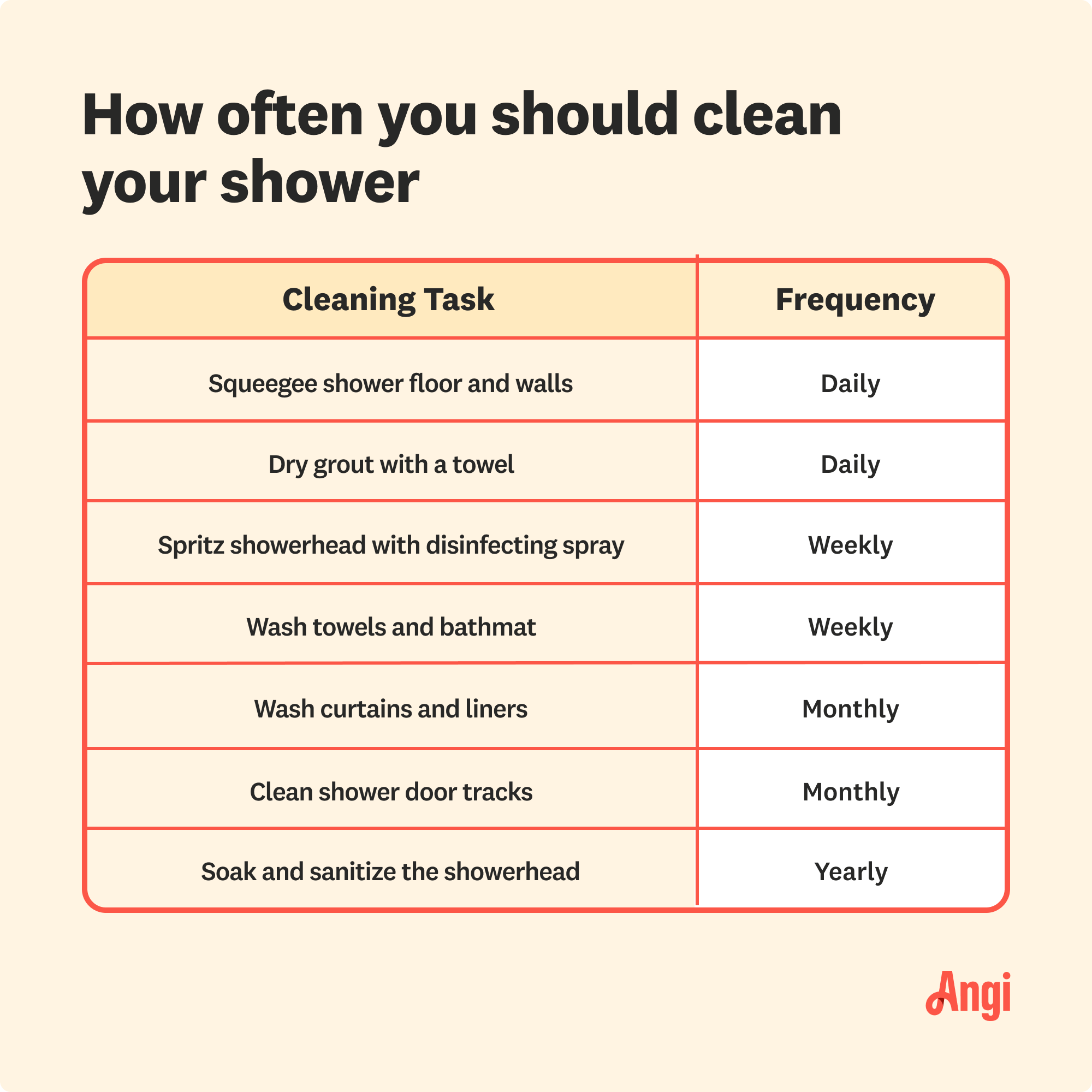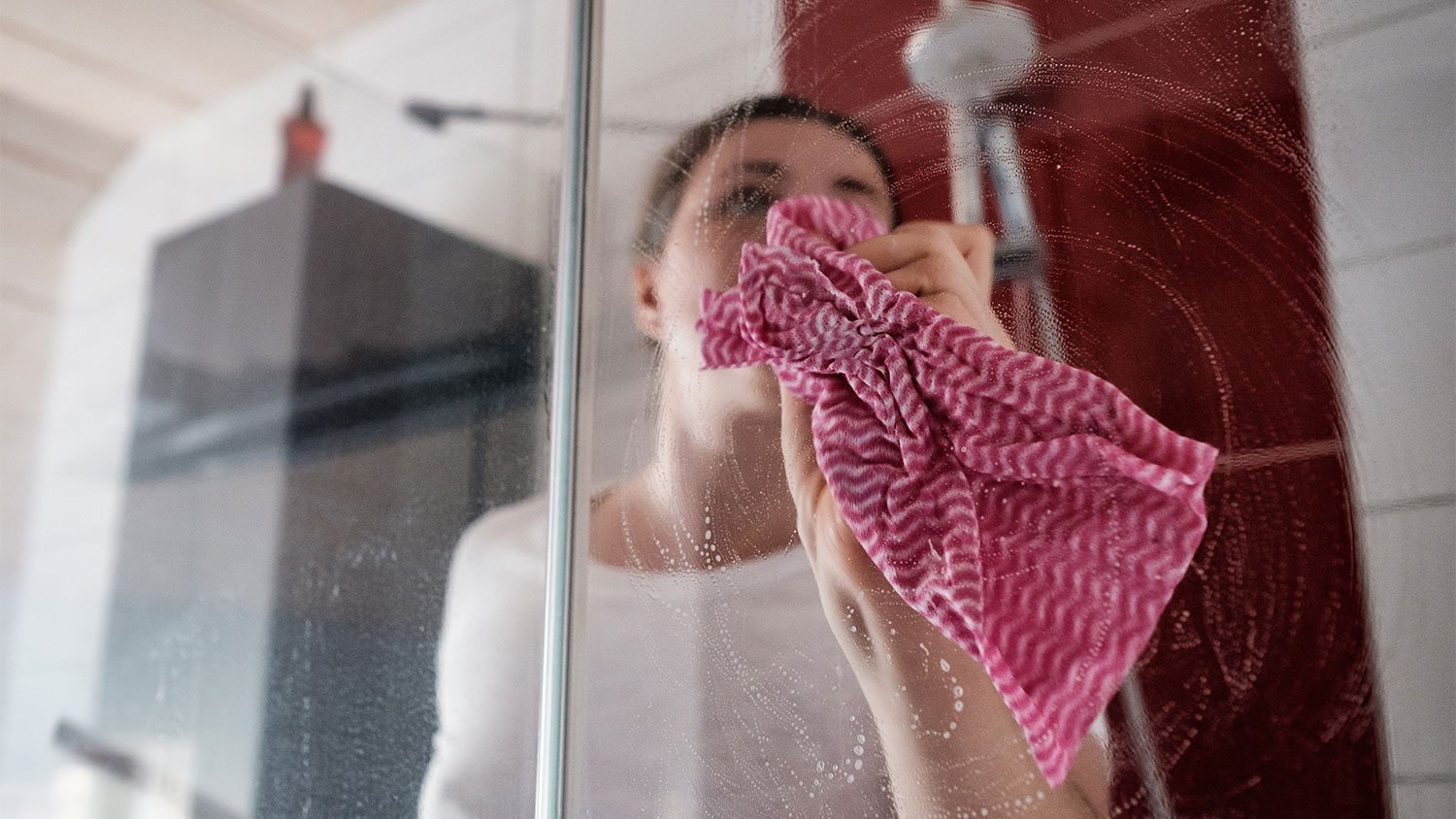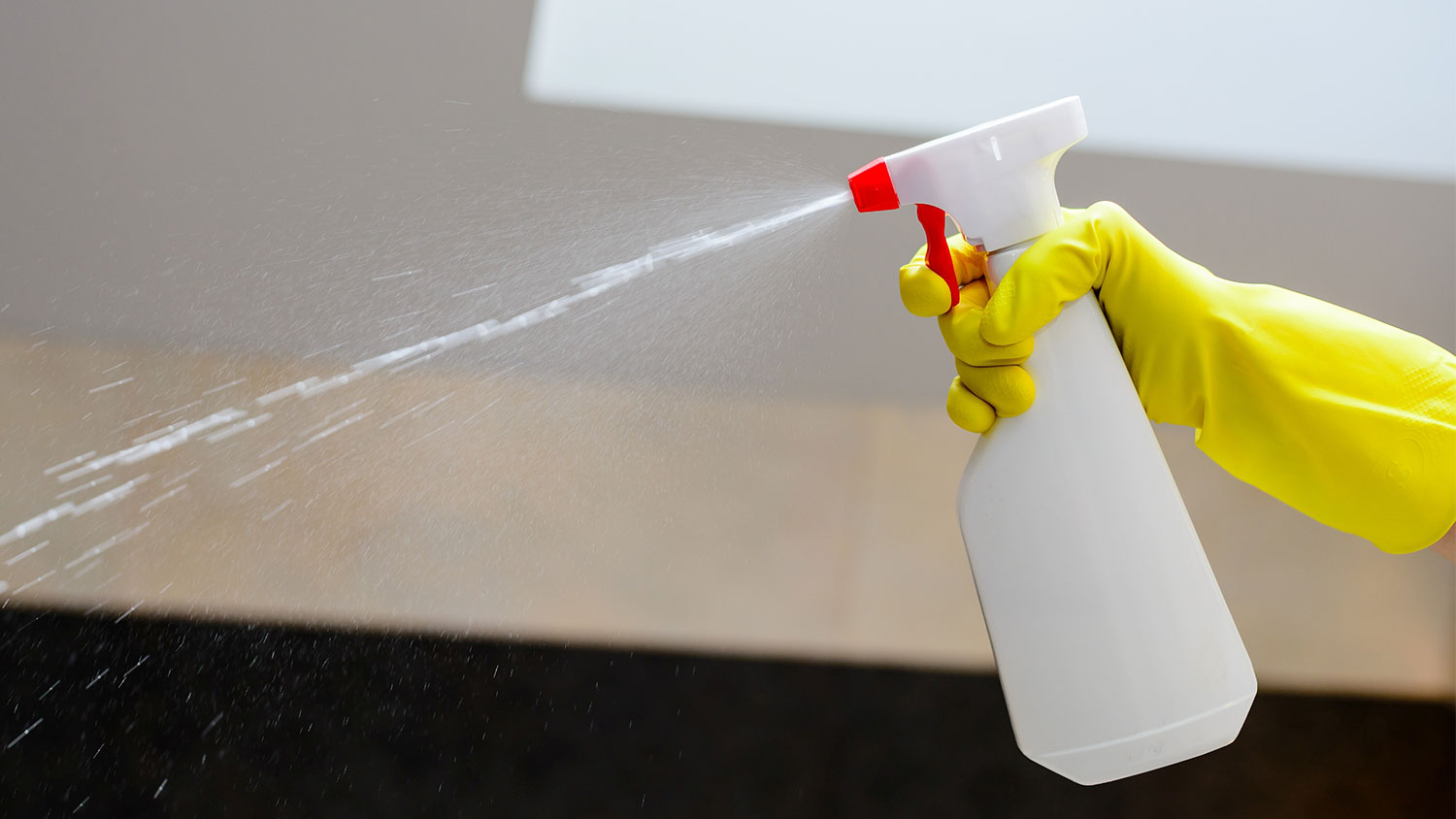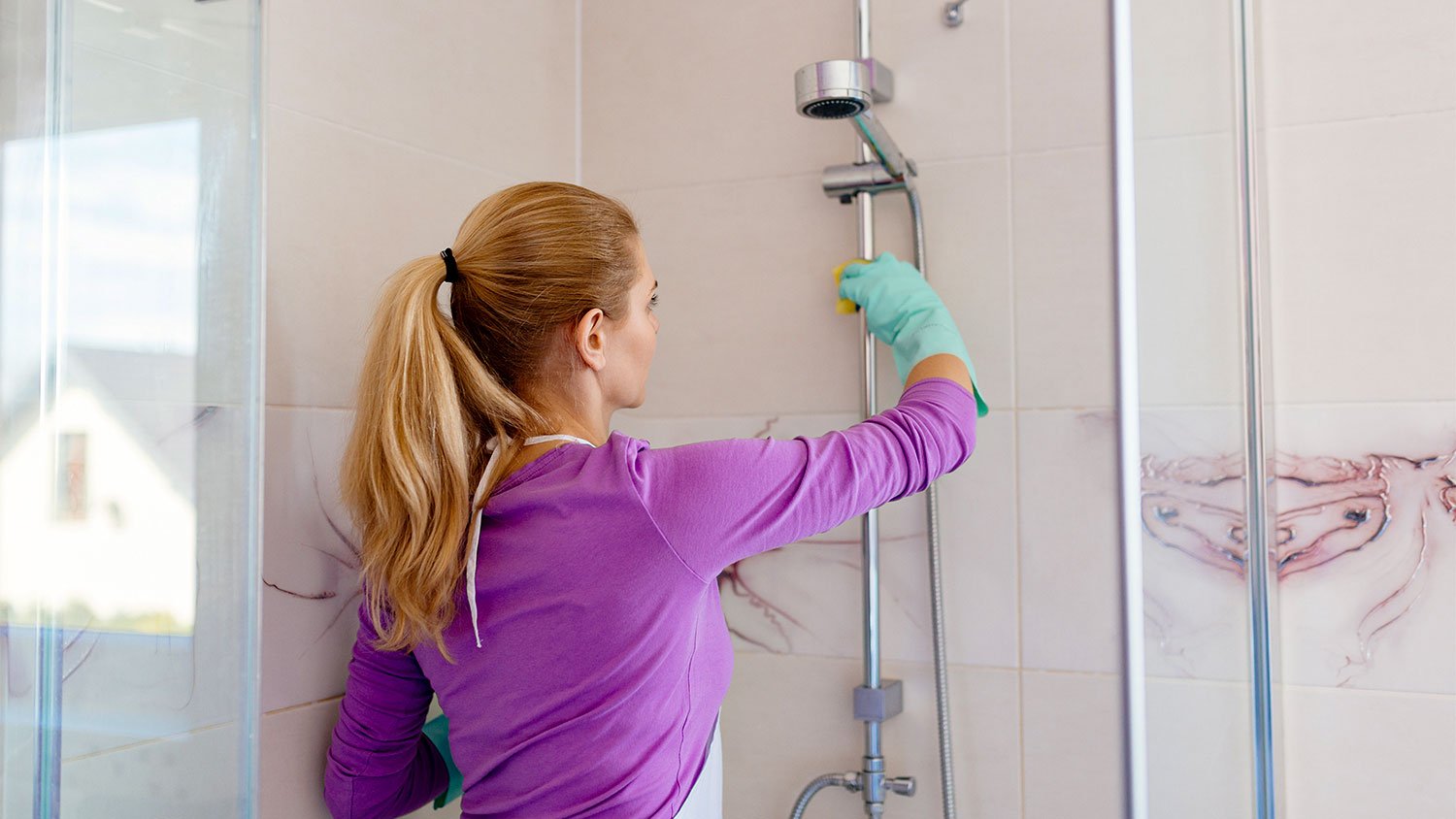
Clean walls are an important part of a well-kept house. Use this wall cleaning cost guide to see what it would cost to hire a professional to get the job done.
Scrubbing your shower doesn’t have to be a difficult task


Germs can hide in many spots in our homes, but one room they love in particular is the bathroom. They seem to especially take to our showers, thanks to the near-constant presence of moisture. However, we can teach you the best ways to clean a shower, make it sparkle, and prevent unwanted bacteria from calling your house its home.
First and foremost, it just feels better to use a clean bathroom and shower. It is, after all, the room in your home where you go to get clean, so you should make sure it’s sparkling.
The next reason is more clinical. If you don’t clean your shower regularly, you’re leaving a vacancy sign on your bathroom door, with a special invitation for mold and mildew to take up residence. Built-up soap scum can become a breeding ground for Serratia marcescens, and dirty showerheads can encourage the growth of Mycobacterium avium, which can irritate anyone but will especially be a problem for anyone with breathing issues or allergies.
One of the best ways to clean a shower is to do small tasks—like squeegeeing the walls—every day to keep the shower dry and prevent mildew and mold growth. You can also use a microfiber towel to dry off the grout lines and prevent soap scum build-up. In addition, you should run a ventilation fan once a day during your daily shower and at least 30 seconds after.
Once a week, perform a full bathroom deep clean, including the shower. Don’t forget to swap out your towels and bathmat after every two to three uses and at least once per week. You should also clean shower curtains and liners once every month.
Every year, during your annual spring cleaning, do a deep cleaning of the showerhead and let it soak in a disinfecting solution to remove any soap scum build-up and biofilm. Include these tasks on your bathroom cleaning checklist, and your shower will maintain a shiny, clean glow.


You don’t need much to keep your bathroom pristine— just some cleaning tools for your shower like soap, disinfecting spray, brushes, and microfiber towels should do the trick.
Pre-rinse the shower basin with warm water.
Scrub the floors and walls with a mild soap detergent and a cleaning brush; don’t use anything abrasive, as that can scratch the fiberglass.
If the shower is extra dirty, sprinkle some baking soda on it and then scrub again to get any remaining spots cleaned up.
Rinse away any dirt and grime.
Follow this with a spray of a disinfecting cleaning solution (not bleach) to kill any bacteria.
Leave disinfecting spray to sit as long as directed and then rinse that away.
Pre-rinse the shower with warm water.
Using a cleaning solution of equal parts baking soda and warm water, scrub the shower with a microfiber cloth or soft brush.
Rinse away the cleaning solution and any gunk you’ve cleaned off the shower surface.
Sanitize the shower with a disinfecting cleaning solution, then wash it away according to the directions.
Note that vinegar is not recommended for use on porcelain; the acid in it might damage the surface.
Wet the shower doors with the shower sprayer or a damp cloth that has been soaked in warm water.
Add some white vinegar to a spray bottle and spray the shower doors. If you are worried about the vinegar scent, you can dilute the spray by adding one part water for every two parts vinegar.
Let the vinegar sit on the doors for 30 minutes—longer if there’s hard water build-up.
Dip a soft sponge in some baking soda and scrub the doors clean.
Use a microfiber cloth to clean off any dirt, soap scum, and cleaning product.
For extra shine, spray the doors with a glass cleaner and wipe them clean.
Check the labels on all linens to ensure they are machine-washable.
Toss the shower curtain, bathmat, and towels into the machine. If directed to, you may have to separate them into loads.
If your plastic shower curtain liner is machine washable, toss it into the washer on cold and do not put it into the dryer.
If the shower curtains or bathmat aren’t machine washable, look for a sanitizing spray to spritz on them.
If any linens are not dryer-friendly, hang them in the sun to air dry.
Unscrew the showerhead if you can.
Once per year, soak the showerhead in a basin with equal parts white vinegar and warm water for 30 minutes. If it doesn’t unscrew, pour the solution into a plastic bag and tie it around the showerhead, submerging it.
Using an old toothbrush or small brush, scrub away any dirt or film and unclog the showerhead of any mineral deposits.
Dry the showerhead with a microfiber cloth before replacing it.
For maintenance, spray the showerhead with a disinfecting spray once every week.
Using a toothbrush, scrub the fiberglass shower door tracks with warm water and soap until grime loosens.
Wipe down the tracks with a clean and dry microfiber cloth.
You can scrape away any stubborn areas with a paint scraper or a razor blade scraper.

If you discover mold or mildew in your shower while cleaning it, there are some steps to take to get rid of it ASAP before it becomes a bigger problem.
Make sure to wear heavy-duty gloves, goggles, and a face mask while disinfecting a moldy area. Not only will you be using some powerful cleaning solutions, but mold itself can also be very harmful to our bodies.
Combine one part bleach with two parts water in a spray bottle. Spritz this solution on the areas you spot mold and let it sit for 10 minutes, allowing the bleach to work its magic. When handling bleach, be sure to use caution by wearing gloves and working in a well-ventilated space.
If you don’t want to use bleach, vinegar is another option—use the same ratios. However, you should never mix vinegar and bleach together. Once you spray on your solution, rinse it away with warm water.
If you’ve been keeping your shower clean and dry, and mold is still appearing, it’s important to look for any excess and unwanted moisture in your home. Check to see that no faucets or valves are leaking and that no drains are clogged. You should also keep an eye out for checked tile and drywall, where water can seep in.

Daily and weekly bathroom cleanings shouldn’t take very much time and are the best ways to keep your bathroom safe from undesirable germs. However, we totally get it if you want to hire a professional cleaner to tackle those tasks or even just the occasional deep clean, which can take a few hours. After all, that’s time you could be spending with that engrossing new novel.
The cost for a home cleaning service typically runs from $30 to $50 per hour, so the final cost will depend on how many bathrooms need cleaning and their size.
Some paints have mold inhibiting agents to prevent the growth of bacteria. An interior paint with a semi-gloss finish will better repel moisture as well.
The CFM (cubic feet per minute) of your exhaust fan should be adequate for the size of your bathroom. To calculate the right CFM, multiply the bathroom’s square footage by 1.1.
From average costs to expert advice, get all the answers you need to get your job done.

Clean walls are an important part of a well-kept house. Use this wall cleaning cost guide to see what it would cost to hire a professional to get the job done.

Keeping your home clean is good for you and your house. Learn what deep cleaning is and how it differs from regular cleaning before you whip out the sponges.

Is cleaning out the attic literally hanging over your head? Check out attic cleaning costs when you hire a professional and when you tackle it yourself.

A home maintenance checklist can help you keep on top of necessary tasks and repairs. Learn how to keep your house in good condition and avoid costly problems.

DIY cleaning solutions can be safe and reliable, not to mention cost effective. Use these tips for cleaning with vinegar and baking soda to reap the benefits.

Deep cleaning a house? Find out how long the process takes—plus tips to maintain a deep clean.